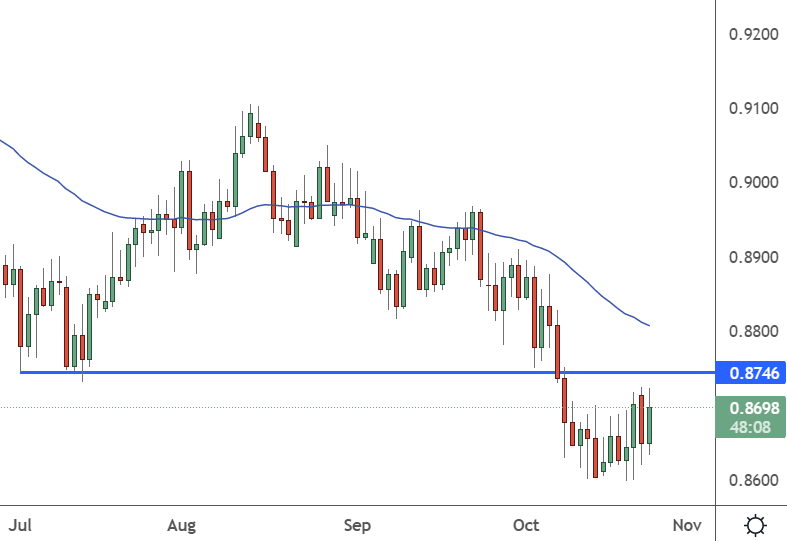AUDCAD can provide volatility for traders with a double dose of economic data from Australia and Canada.
Australia will see its latest inflation report released ahead of the Asian session, and Wednesday brings the Bank of Canada interest rate meeting.
AUDCAD – Daily Chart

The Canadian dollar has had the upper hand in recent weeks, with the AUDCAD pair seeing lows near 0.8600. If the data supports the Aussie dollar, a move above 0.8750 can spark a rebound. The first band of resistance levels for an AUD rally are 0.8800-0.8900.
Australia’s cost of living crisis is set to worsen before it gets better. Energy prices are expected to surge by 56%, and fuel costs will rise by over 10%. The highest level of inflation in 32 years means Australians will suffer with wages until at least 2024, according to the country’s treasurer.
Aussie Treasurer, Jim Chalmers, delivered the first Budget in nearly ten years and said that rising costs would erode pay increases for two more years. “Wages are growing faster now than before the election, but that welcome news is tempered by rising electricity prices and grocery bills eating into pay packets,” he told Parliament. “When that inflation moderates, real wages are expected to start growing again in 2024.”
The increasing inflation numbers could force the Reserve Bank of Australia to act harder on interest rate hikes, which would support the Aussie dollar against its Canadian counterpart. The Tuesday figure for Australian inflation is expected at 7% from 6.1%. However, the RBA already surprised markets with a 25 bps rate hike at the last meeting when they expected a more significant 50 bps increase.
The Bank of Canada is set to deliver a fifth interest-rate hike this week, but analysts expect it may be the last due to recession fears. Markets are pricing a 75 basis-point hike by the BOC on Wednesday, increasing its benchmark rate to 4%.
The BOC Governor Tiff Macklem said the bank will continue its tightening policy until it sees “clear evidence” inflation is returning to its 2% target from around 7%.


